Who better to tell you all about the Labours of Hercules than the Greeks? That’s certainly the thinking behind the new Hercules Park at Thessaloniki. Designed to bring the original superhero’s feats to life for kids through a mix of advanced 3D technology, riveting storytelling and awe-inspiring creativity: it’s the type of astonishing achievement that would have made Hercules himself proud.
Hercules Park is open until 24 February 2019, but if you can’t make it to Thessaloniki in time, don’t worry. The labours of Hercules mostly took place in Greece and in quite a few places you may recognise: mainly because they’re as spectacular as ever and as well known for amazing holidays as heroism these days.
Visit Greece have already applied their classical education to the travel planning, picking out the best places to mix modern adventure and ancient myths. So with all that covered you just have the easy task of choosing the heroic destination for your next family holiday. Follow in the footsteps of Hercules and have a look:
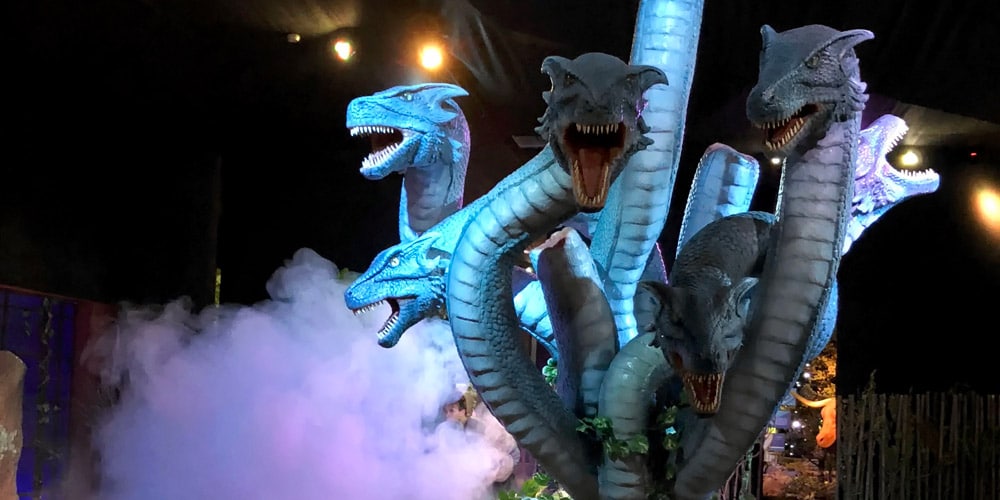
© Hercules Park
Crete – site of the 7th Labour of Hercules, capturing The Cretan Bull
Crete is the largest of the Greek islands, the most southerly and known for long summers and upwards of 300 days of sunshine a year. It’s also the island with over 1000km of coast, several of Europe’s loveliest beaches and a fascinating history woven with traces of Minoan, Byzantine, Ottoman, Egyptian and Venetian culture.
According to legend, Zeus was born on Crete. And it’s here you’ll find the mighty palace at Knossos where it’s said King Minos had Daedalus design a labyrinth for the Minotaur: half-man half-bull, and reputedly the son of King Minos’ wife and none other than the Cretan Bull, captured by Hercules as the seventh of his labours.
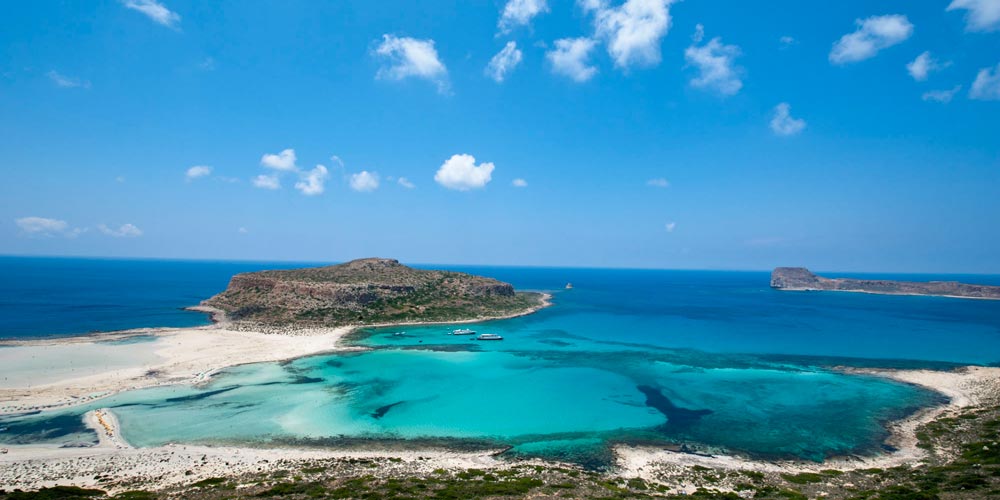
© Crete – Chania Balos
Chania
The lovely city of Chania has always been desirable. Luckily a history of almost perpetual invasion left behind a legacy of wonders like the 14th century Venetian Harbour and amazingly eclectic Old Town. Even the ancient lighthouse here comes with a hint of Italian and Egyptian in the mix. This is definitely one place to explore on foot: kids won’t mind because there’s so much to see. And an almost endless supply of cafés and quaint taverna makes it easy to stay motivated.
But don’t stop at the city. Chania sits north west on Crete, so it’s perfectly placed for beautiful beaches, secret coves, traditional villages and great swathes of unspoiled countryside.
Don’t miss
- Chania for: the Venetian Harbour; the Kastelli District in the Old Town; Archaeological Museum; the ancient Ovraika and Splantzia Quarters; the Folklore Museum; Maritime Museum; Byzantine Museum and the Chania Museum of History – one of the largest historical archives in Greece.
- Chania’s lively Municipal Market, it looks amazing and has almost 80 shops.
- Multi-cultural Chania restaurants serving everything from Mediterranean specialities and tradition Cretan cuisine which is linked good health and longevity.
- The artist’s enclave at Verekynthos just outside Chania. And a visit to the women’s lace co-operative in the colourful village of Gavalochori.
- Archaeolab in Kissamos, west of Chania where young wannabe archaeologists can dig with real tools for real finds.
- The boat trip from Kissamos to world famous Balos Beach on the far western tip of Crete – you can also drive there from Chania.
- Vamos – the first agritourism village in Greece – for lovely guesthouses, friendly artisans and fabulous traditional taverna.
- Hiking the spectacular Samariá Gorge at the heart of Crete’s only national park, just over an hour south of Chania. It’s a long walk, but an incredible experience with older kids and teens. Excellent local guided hikes are even more fun for families.
Find out more about family holidays in Chania with Visit Greece
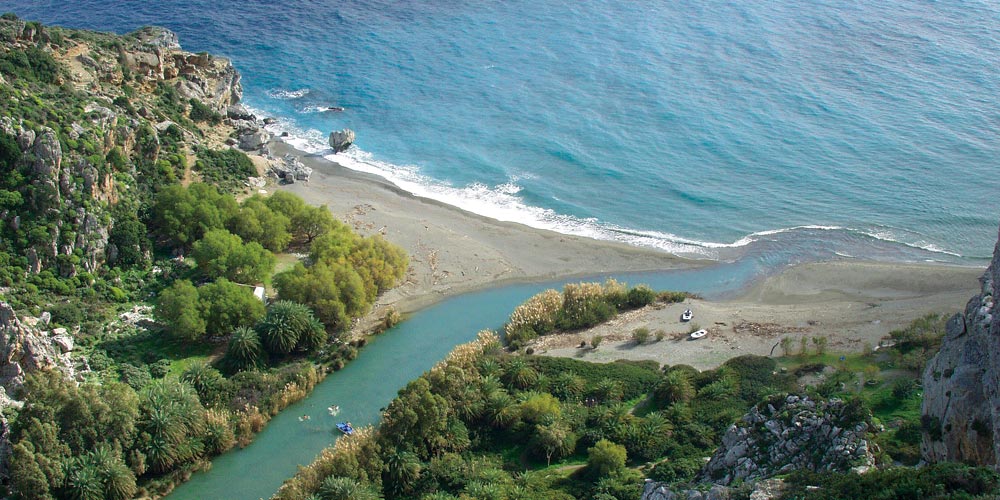
© Preveli Rethymno
Rethymno
Tucked between Chania and Heraklion on the north coast of Crete, Rethymno is often called the island’s prettiest city. A description that might owe quite a bit to its almost perfectly preserved medieval Old Town, which is close to heaven if you hanker after little cobbled streets and pastel paint colours. Kids will love exploring the historic district almost as much as they’ll adore 13km long Rethymno Beach.
Don’t miss
- The impressive Venetian Fortezza one of Crete’s famous landmarks, just north of Rethymno on Paleokastros Hill. Great fun to explore with kids, it’s also home to the city’s Archaeological Museum.
- Dozens of divine beaches less than an hour’s drive from Rethymno, try: Préveli Beach for palm grove trimmed sands; sweet sunbathing coves at Bali Bay; fantastic water sports on Plakiás Beach; Aghios Pavlos Beach for otherworldly sand dunes.
- A tour of the Ideon Cave. Said to be the birthplace of Zeus it’s about 90 minutes drive south east of Rethymno.
- A gentle day horse riding round the beaches, olive groves and countryside of Plakias – south of Rethymno. Perfect for families and no equestrian experience needed.
- The village of Margarites to see astoundingly talented ceramicists at work. Or the mountain village of Anogeia to hear traditional local music.
- The archaeological park and new museum at ancient Eleutherna for a remarkable insight into the epic poetry of Homer.
Find out more about family holidays in Rethymno with Visit Greece
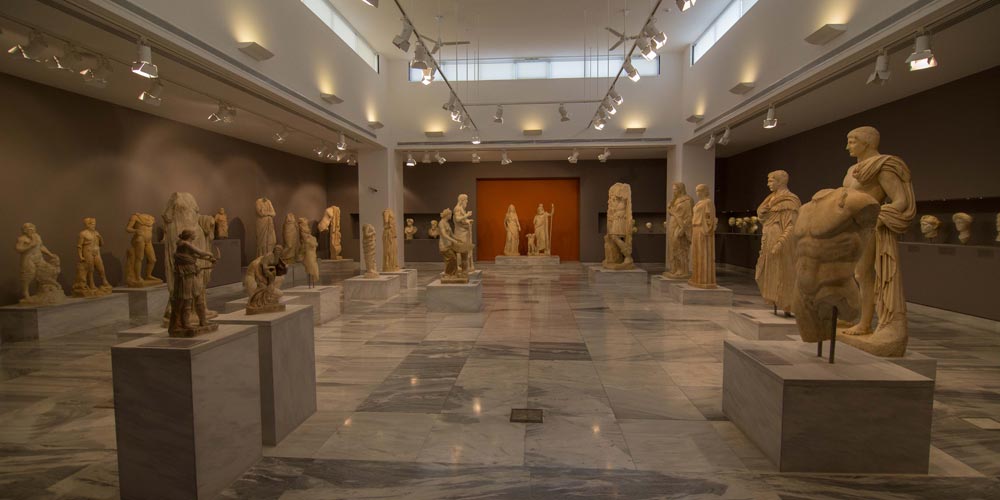
© Heraklion Archaeological Museum
Heraklion
Heraklion is a great city, you only need to look at the remains of its mighty fortified walls to know that. It’s the largest in Crete and has been pretty much the island’s de facto capital for the past millennium. It’s another city with a fascinating blend of cultural influences, a charming old town and lots of history. But it’s also a major European holiday destination and for families that means waterparks, theme parks, big sporty beaches, activities and plenty of fun mixed in with the grand museums and ancient monuments.
Don’t miss
- Heraklion Archaeological Museum; Historical Museum of Crete; Natural History Museum of Crete; Cretaquarium; Lychnostatis Museum of traditional life and folklore.
- The recently restored 16th century Koules Fort in the historic Venetian Harbour.
- A walk along the top of the old city walls – there’s a safe footpath for four of their entire seven kilometre stretch.
- Wandering round the old town in the afternoon, for colourful kafeneio and introducing kids to the delights of mezze – real food, cleverly disguised as snacks.
- A day at Knossos. Explore the excavated remains of the ancient Minoan Palace, hear Minotaur legends, see the mosaic labyrinths, and find out more about Hercules and the Cretan Bull.
- Visit the ruined city of Phaistos, one of the earliest Minoan settlements. It’s just an hour south of Heraklion. Kids can also see the incredible artefacts excavated from this site at the Heraklion Archaeological Museum.
- Acres of beaches around Heraklion, try: broad and sandy Ammoudara for warm waters and windsurfing; Karteros-Coast is great for families; pretty Agia Pelagia to the north west is a good choice with younger kids.
- Water City Waterpark or enormous Acqua Plus, the largest waterpark in Crete – both minutes from Heraklion city centre.
Find out more about family holidays in Heraklion with Visit Greece
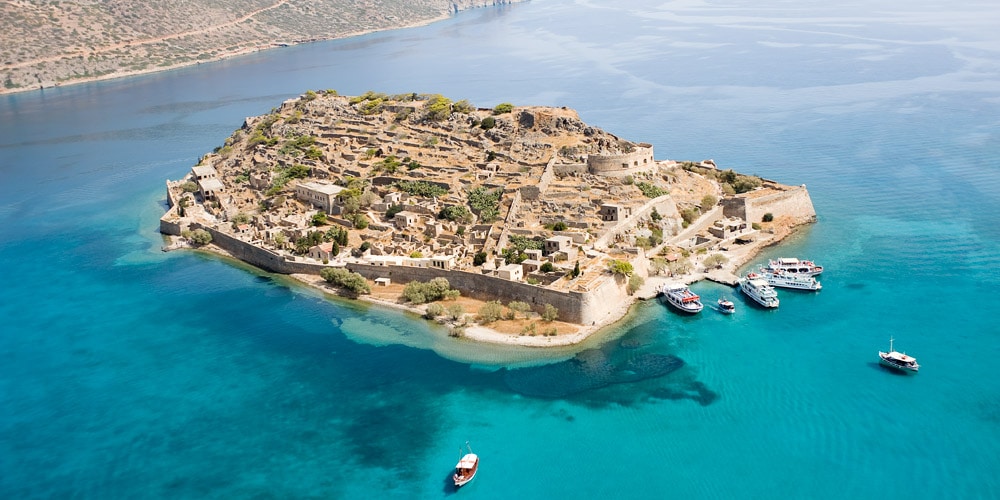
© Spinaloga
Lasithi
The eastern Crete region of Lasithi has the sunniest and driest weather and a reputation for quietly elegant resorts, unspoiled harbour towns, historic cities and intriguing islands. It’s a wonderful area for peaceful beaches and wild countryside, and if you like discovering cute mountain villages, Lasithi is definitely the place for that too.
Don’t miss
- Áyios Nikólaos for lively seaside resort atmosphere, its bustling marina and nearby beaches like Karavostássi, Áyios Panteleimonas and Voúlisma.
- The breathtaking coastal town of Siteia surrounded by Minoan sites at Petras Village, Sandali Village and Karydi Village.
- A boat trip from Elounda to the historic fortress island of Spinolonga. Originally a 16th century Venetian stronghold, then one of Europe’s last leper colonies and now the most popular attraction on Crete, after Knossos.
- A day on Vai Beach – 30 minutes east of Siteia. It’s trimmed by one of the biggest palm tree forests in Europe and perfect for under fives. Older kids will like sporty Kouremenos Beach just a little further south. And Petras and Agia Fotia are good swimming beaches just outside Siteia.
- The ‘other’ Minoan Palace at Kato Zakros; Venetian ruins on Liopetro Hill; Siteia Archaeological Museum.
- A drive inland for olive groves and vineyards, ancient hamlets and charming mountain villages.
Find out more about family holidays in Lasithi with Visit Greece
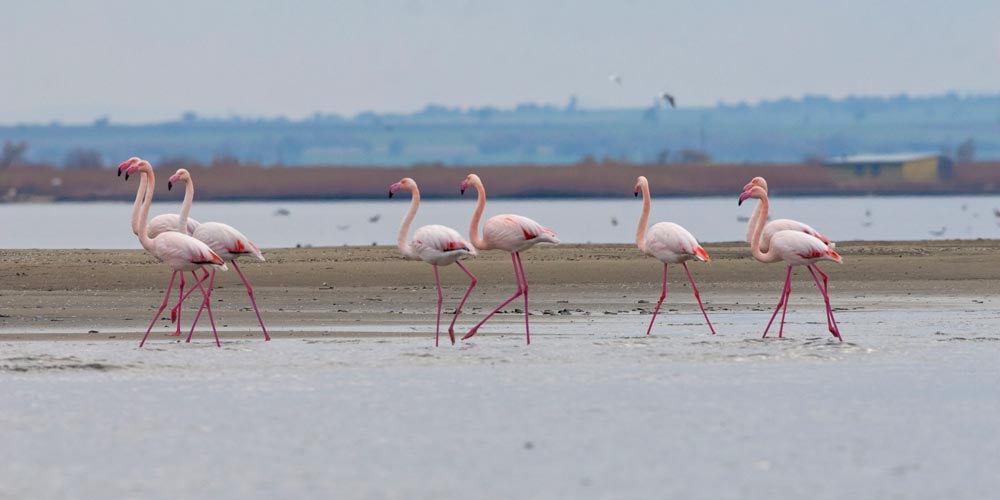
© Flamingos-Evros
Thrace
Thrace is steeped in Ancient Greek myth and legend. It’s said Orpheus was born here and that Hercules captured The Mares of Diomedes just outside the city of Xanthi: successfully completing the eighth of his labours. And today the gloriously unspoiled landscape, huge flocks of birds, mysterious wetlands, vast forests and lakes, soaring mountains and untamed rivers feel as mythical and thrilling to kids as ever.
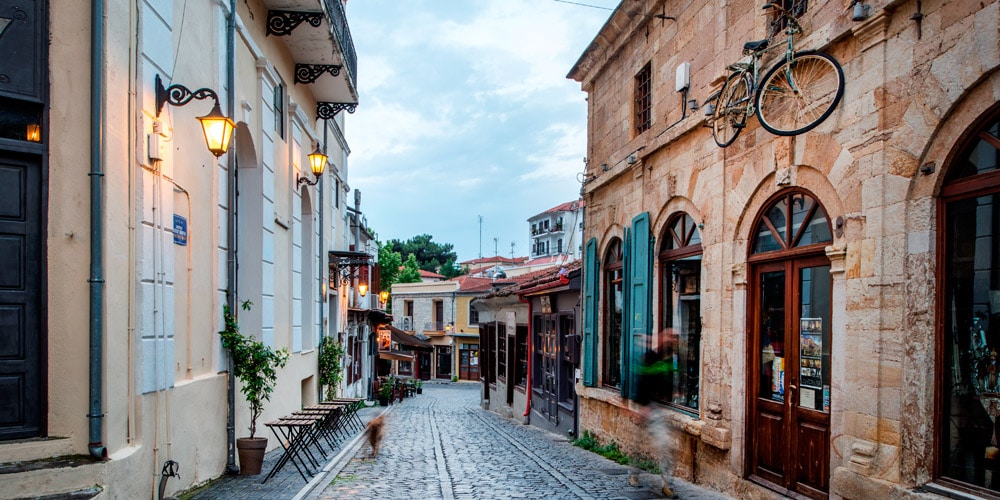
© Xanthi
Xanthi – site of the 8th Labour of Hercules, capturing The Mares of Diomedes
The graceful city of Xanthi is completely free of warlike tribes these days. But it does like a good wild Carnival celebration for Mardi Gras. And bold kids are always welcome to burn off energy with anything from river kayaking and canoeing to horse riding, mountain biking and even archery. The gorgeous old town is said to be one of the loveliest in Greece and there’s plenty of intrigue to match the prettiness, which makes it fun for everyone to explore.
Don’t miss
- The marvellous Old Town’s gems like: Kouyioymtzoglou Mansion; Municipal Art Gallery; Fex Cultural Centre; Metropolitan Hall of Xanthi.
- The buzzy Saturday morning bazaar on Zoagoras Square.
- Touring the ruins of the ancient city of Abdera, founded by Hercules in memory of Abderus his young companion during the eighth labour. Legend says Abderus was killed and eaten by the Mares of Diomedes during their capture.
- Wildlife-rich Lake Vistonida in Eastern Macedonia and Thrace National Park, 25km south east of Xanthi. Or flocks of flamingos at Porto Lagos.
- The family-friendly fun of Xanthi Old Town Festival every year in September.
- Hiking, climbing, canoeing, kayaking or cycling in and around the Nestos Straits, 30 minutes from the centre of Xanthi.
Find out more about family holidays in Xanthi with Visit Greece
Rodopi
The beautiful region of Rodopi is known for its wonderfully warm hospitality: there are even welcoming mountain huts dotted all over the dramatic Rodopi Mountains. Although, like almost everywhere in Greece, there’s heaps of history mixed in with the gorgeous scenery; towns overflow with interesting architecture and archaeological finds a-plenty mean even the tiniest of them can justify a well-stocked museum – or two.
Don’t miss
- The capital city of Komotini for its ancient Byzantine city walls; Komotini Fortress and Cathedral; the historic Muslim Quarter; Komotini Archaeological Museum; the Roma Basketry Museum; Thracian Museum of Education.
- Komotini Old Market Place for quirky little shops, blacksmiths, thrift stores and traditional family businesses.
- The miniature Komotini Tourist Train round the city sights.
- Hiking some of the E6 European Long Distance Walking Path through the Rodopi Mountains.
- The southern beach resort of Fanari on the Thracian Sea.
- The ancient site of Maroneia on Ismaros Mountain; carvings of Thracian Horseman in the village of Neda; Hellenic Mosaics at Ayios Charalambos.
Find out more about family holidays in Rodopi with Visit Greece
Evros
Alexandroupolis is the capital city of the Evros region and famous for its grand French-built lighthouse, views over the Aegean and interesting local museums. The rest of the region is just as intriguing with its mix of thermal spas, thrilling outdoor adventures, big sandy beaches, a fair share of ancient history, and even a fossilised forest.
Don’t miss
- Alexandroupolis Promenade and 18m high lighthouse; Aghios Nikolaos Cathedral; Alexandroupolis Museum of Natural History; the Ancient Thracian shrine at Kirki; Alexandroupolis Historic Folklore Museum.
- Dadia Forest, habitat of several rare European birds of prey, including the White-Tailed Eagle, along with over 40 species of reptile. Take one of the excellent eco-tours and visit the Vulture Observatory.
- The megalithic tombs and monuments in the Valley of Ardas close to Orestiada.
- Historic Traianoupoli Thermal Spa just north of Alexandroupolis.
- A wildlife-spotting boat tour round the 9500 hectare Evros Delta: one of Europe’s most important and best protected wetlands.
Find out more about family holidays in Evros with Visit Greece
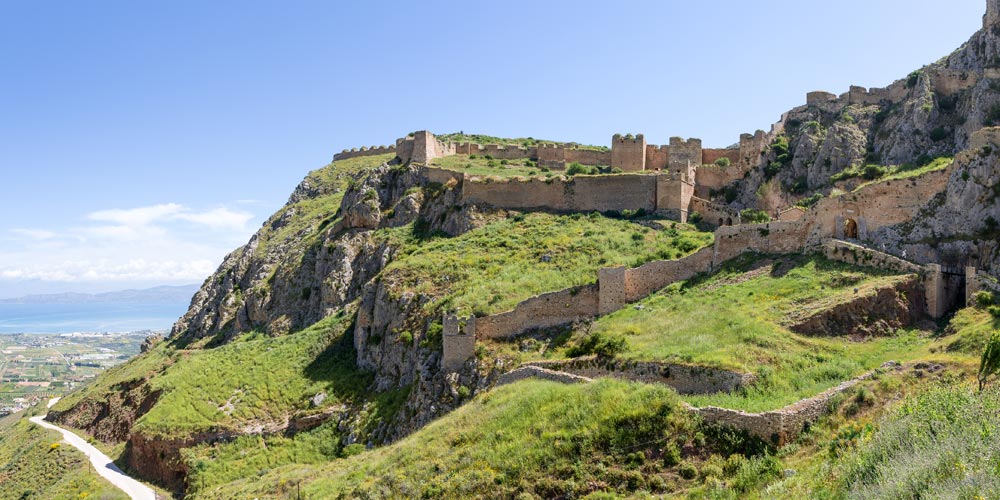
© Akrokorinthos Park
Peloponnese
It was Zeus’s vengeful wife Hera who came up with the idea of testing Hercules. But it was her son King Eurystheus of Mycenae who actually dreamed up every one of the diabolical tasks. And the Mycenaean Kingdom he ruled is now known as the Peloponnese. Hercules hauled all the fruits of his labours back here, from the captured Ceryneian Hynd to the apples from the Garden of Hesperides, back here for King Eurystheus. So although only a few heroic feats technically took place on this glorious, leaf-shaped peninsula it really is the heartland of the heroism.
Corinth – site of the 6th Labour of Hercules, Killing the Stymphalian Birds, and the 1st Labour of Hercules, to kill the Nemean Lion
Thanks to its wealth of olives and grapes – and wine too, naturally – Corinthia was for a long time one of the most important regions in Greece. The local wine is still wonderful, the vineyards lovely and there’s no mistaking the historic grandeur in the city of Corinth. But these days, kids will be just as taken with adventures in the Corinthian Alps, water sport packed beaches on the Gulf of Corinth or scoping out the wildlife around Lake Stymphalia – the very same lake where Hercules caught and killed the Stymphalian Birds: labour number six.
Don’t miss
- The seaside city of Corinth for: Kalamia Beach and Floisvos Marina; the dramatic ruins of Ancient Korinthos; the Sun God’s Residence at Acrocorinth; summer evenings on lively Perivolakia Square.
- The world famous Corinthian Canal with its stunning 79m high cliffs.
- The charming coastal resort of Lechaio on the Gulf of Corinth.
- Bird watching on mythical Lake Stymphalia and the award-winning Stymphalia Environment Museum.
- The Corinthian Alps for horse-riding, climbing, canyoning, mountain biking, paragliding, and even skiing in winter.
- The archaeological sites at Nemea, particularly the 4th century B.C Stadium which seated 40,000 spectators back in the day and hosted the Nemeia Games: a biennial event similar to the Ancient Olympics.
- The Modern Nemeia Games: revived in 1996 after 2300 years and now held every four years in Nemea AKA the Wine Capital of Southern Greece.
Find out more about family holidays in Corinth with Visit Greece
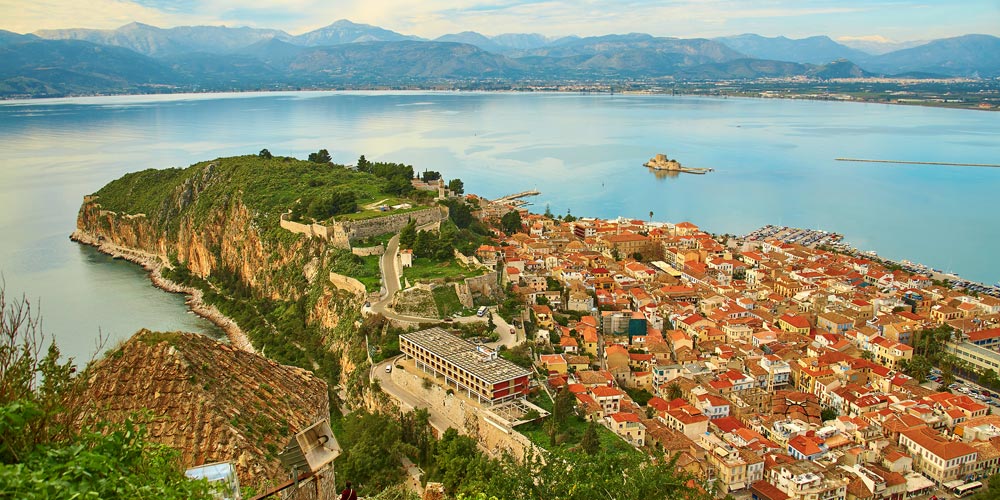
© Nafplio
Argolida – site of the 2nd Labour of Hercules, to kill the Lernaean Hydra, and the 3rd Labour of Hercules, to capture the Ceryneian Hind
The Argolida region was the powerhouse of the Mycenaean kingdom which flourished from 1600BC to 1000BC. And at its heart was magnificent Argolida, considered to be one of the most ancient cities in Greece. A few of the names may have changed over the centuries, but Argolida is as impressive as ever and kids will have no trouble envisioning its mythical past.
Don’t miss
- Ancient Argolida’s archaeological site, especially the 20,000 seater Hellenistic amphitheatre.
- The Mycenaean citadels of Midea and Larissa; Argolida Archaeological Museum; Constantopoulou Mansion.
- The Sanctuary of Asklepios at Epidaurus, one of the country’s most important archaeological discoveries and a UNESCO World Heritage Site.
- The beautiful town of Nafplio, said to be the loveliest in the Argolis region, if not the entire Peloponnese Peninsula.
- Views over Nafplio from astonishing Palamidi Castle – kids will have to climb 999 steps to get there, but it feels like an adventure all the way.
- The glamorous beach resort of Porto Heli AKA the Peloponnese Riviera. Or the laid-back seaside town of Ermioni, famous for fish restaurants, pine forests and pretty beaches.
- More kid-shaped myths and legends at Ancient Mycenae, the city of Agamemnon; and Tiryns, the city built by Cyclops.
Find out more about family holidays in Argolida with Visit Greece
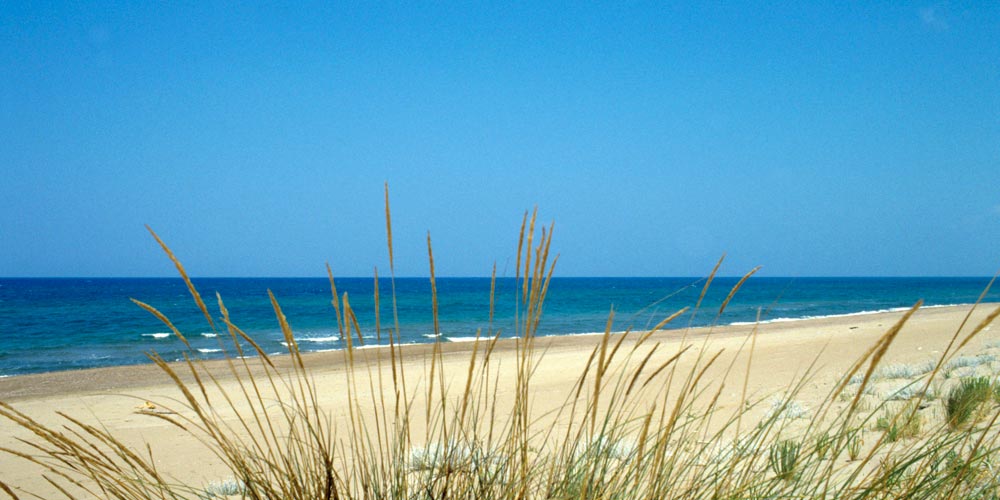
© Ilia
Ilia – site of the 5th Labour of Hercules, Cleaning the Stables of Augeas, and the 4th Labour of Hercules, to capture the Erymanthian Boar
There are almost as many myths about the origins of the Ancient Olympic Games as gods and goddesses in Greek mythology. Some sources cite Hercules as their founder, others are more inclined to go with lesser known hero, Pelops. What no one disputes is where the games were first held, because it’s tricky to argue when Ancient Olympia is still where it’s always been, in beautiful Ilia in the western Peloponnese.
Don’t miss
- The Ancient Olympia archaeological site, described by UNESCO as today’s most relevant ancient World Heritage Site.
- The enormous Temple of Zeus at Olympia: the ancient games were dedicated to the King of the Gods.
- Kayaking on the River Alfios. It’s the longest in the Peloponnese and kids will be thrilled to know it was this river which Hercules rerouted to clean out 30 years worth of dung from the Stables of Augeas, in just one day: labour number five.
- The lovely west coast beach resort of Katakolo, the second biggest attraction in the western Peloponnese, after Ancient Olympia.
Find out more about family holidays in Ilia with Visit Greece
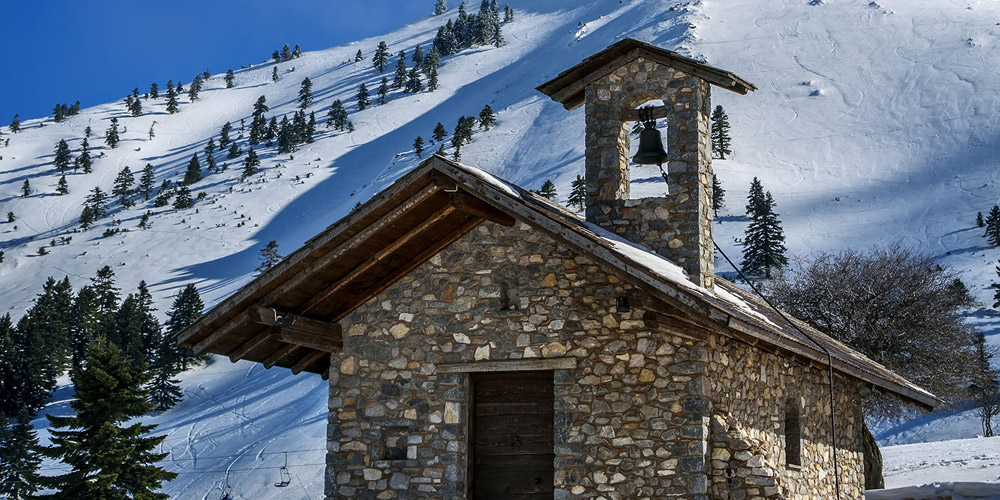
© Kalavryta
Achaia
A mix of coast, countryside, mountains and fun towns and cities makes Achaia in the far north of the Peloponnese an idyllic all-rounder for family holidays. You can even take one of Europe’s most scenic rail journeys in this enchanting region, and head from the beach up into the hills in just over an hour – crossing an amazing 49 historic bridges on route.
Don’t miss
- The vibrant coastal city of Patras famous for its soaring Old Town: 192 steps for kids to clamber up, but definitely worth the climb.
- Archaeological sites near Patras, like the Wall of Dymaeans: supposedly built by Hercules, and the only Mycenaean Acropolis in Western Greece.
- The fascinating town of Kalavryta on the slopes of Mount Helmos. Known for its winter sports; cog railway; pretty town squares, and the Mega Spileon Monastery built into an enormous cavern.
- Hiking, climbing or mountain biking in the Vouraikos Gorge close to Kalavryta.
- The iconic scenic rail journey from Diakopto on the coast to the mountain town of Kalavryta
- The thrilling Cave of Lakes Geopark, just outside Kalavryta.


